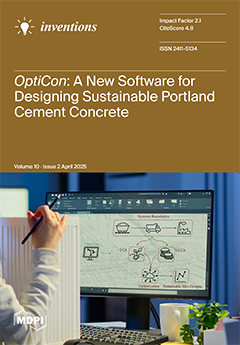The production of Portland Cement Concrete (PCC) generates significant environmental impacts that increase climate change and decrease people’s quality of life. Recent studies highlight the potential to reduce these environmental burdens by partially replacing Portland cement with Supplementary Cementitious Materials (SCMs) and coarse aggregates with Recycled Concrete Aggregate (RCA). However, designing PCCs with simultaneous contents of SCMs and RCA is not easily manageable because current design procedures fail to adjust all of the variables involved. In order to overcome these limitations, this research introduces a novel mathematical model designed to develop operationally efficient PCC mixes that are both environmentally sustainable and cost-effective. The proposed model, denominated
OptiCon, employs the Life-Cycle Assessment and Life-Cycle Costs Analysis methodologies to evaluate the incorporation of three different SCMs (i.e., fly ash, silica fume, and steel slag) and RCA into PCC mixes.
OptiCon is also integrated within a graphical user interface in order to make its implementation straightforward for potential users. Thus,
OptiCon is operationalized through an algorithm, offering a replicable approach that can be adapted to various contexts, providing both a theoretical framework and a practical tool for state agencies, engineers, suppliers, and other stakeholders to adopt more environmentally friendly practices in concrete production. Furthermore, a case study from northern Colombia analyzed thirty mix design scenarios with varying supplier conditions (foreign, local, or mixed), calculating costs and CO
2 emissions for a fixed concrete volume of 1 m
3. The findings demonstrated that utilizing
OptiCon can achieve substantial reductions in both CO
2 emissions and production costs, underscoring the model’s efficiency and practical impact.
Full article





